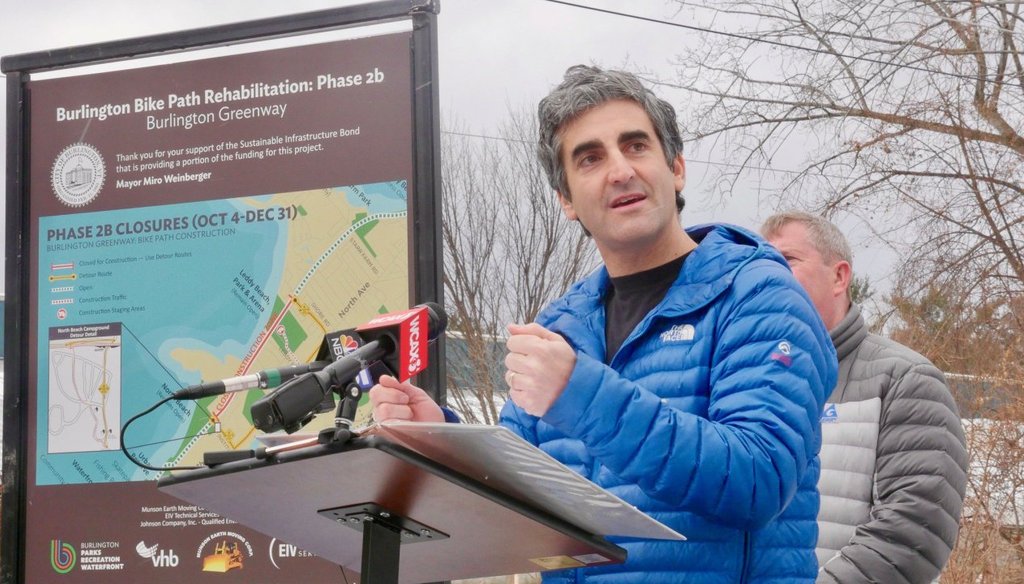

Our only agenda is to publish the truth so you can be an informed participant in democracy.
We need your help.


Miro Weinberger announces the completion of a bike path in Burlington in 2017. Photo by Cory Dawson/VTDigger
In the wake of a national climate report predicting serious economic and human health impacts in the United States in the century to come, Burlington Mayor Miro Weinberger joined the growing movement in support of carbon pricing.
Weinberger announced at a conference on Dec. 1 that he has put together a coalition of Northeast mayors who are calling on state lawmakers to enact a "carbon pollution fee".
During his speech unveiling the proposal, he spoke of Burlington and other cities’ efforts to act on climate change.
"Cities, too, have been a source of climate progress, as Burlington’s environmental track record over the last 30 years makes clear," Weinberger said.
"As a city, we currently use about four percent less electricity today than we used in 1989, saving Burlingtonians millions of dollars annually in avoided retail power costs," he added.
Could Burlington really be using less electricity during a time when the population increased by 12.5 percent and development has been a constant? We decided to find out if Burlington’s electricity usage has really gone down over the past three decades.
Asked about the claim, Weinberger’s office pointed us to the Burlington Electric Department’s 2017 Energy Efficiency Annual Report.
"Overall electricity use in 2017 was about 4.0% lower than in 1989," the report says.
The annual report actually relied on electricity use in 2016, said Mike Kanarick, manager of communications for Burlington Electric Department.
He said 1989 was the first year Burlington began investing in energy efficiency. In 1990, the city passed an $11.3 million bond for efficiency projects.
In 1989, BED sold 353,562,840 kilowatt hours of electricity, while in 2016, the utility sold 340,281,192 kWh — a decrease of 3.76 percent.
The actual figure from 2017 is even lower, Kanarick noted. Since publication of the report, utility staff calculated that BED sold 332,090,724 wWh in 2017, which is 6.07 percent less than in 1989, he said.
However, it hasn’t been a steady downward trend over the past three decades. It’s been up and down. Burlington’s electricity use was actually higher in 2016 than it was during 12 years since 1989. The lowest electricity consumption during that time was in 1996.
Our data analysis shows that the general trend in Burlington’s total electricity usage has actually been slightly upward, although per capita usage has been going down.
Weinberger’s statement is correct -- the city’s electricity consumption was about 4 percent lower in 2016 than in 1989. But that statistic is not reflective of the general trend in Burlington’s energy usage, which has been on a slight upward trajectory during that time.
What the mayor said is technically true, but it might give the wrong impression.
We rate this Mostly True.
Burlington Electric Department, 2017 Energy Efficiency Annual Report
Email interview with Mike Kanarick, Burlington Electric Department’s Manager of Customer Care and Communications, Dec. 5, 2018.
Email interview with Olivia LaVecchia, communications coordinator for Mayor Miro Weinberger, Dec. 4, 2018.
In a world of wild talk and fake news, help us stand up for the facts.
